“I’m not missing Sarah Lund yet,” says The Killing’s creator and show-runner Søren Sveistrup. “Maybe that day will come. Now it’s a bit of a relief.” Having finished in Denmark in November and on Saturday night on BBC4, the finale of season three retires one of TV’s greatest detectives, Sofie Gråbøl’s Sarah Lund, and, especially in season one, one of TV’s greatest crime thrillers, a gripping mixture of mystery, miserablism, family, politics and knitwear. Here Sveistrup talks us through the ten key ingredients that made the show successful. “We are all suckers for a good crime story,” he says. “Maybe we feel attracted to it because as we live our normal lives and these stories take us to the edge. We get a chance to look into the abyss and then move back to the sofa and say, ‘Ooh, I’m happy that’s not me.”
Spoiler warning. If you haven't watched any of the three seasons of The Killing, major plot spoilers are contained within this feature.
Set in Copenhagen, The Killing debuted on Danish TV on January 7, 2007 — BBC4 didn’t run it until 2011 — and was initially built on the premise of following a crime investigation over 20 days in 20 episodes (seasons two and three tightened the focus to ten days/ten episodes). The first season dealt with the murder of 19 year-old Nanna Birk Larsen, the second explored the killing of lawyer Anne Dragsholm and the third followed the kidnapping of nine year-old Emilie Zeuthen.
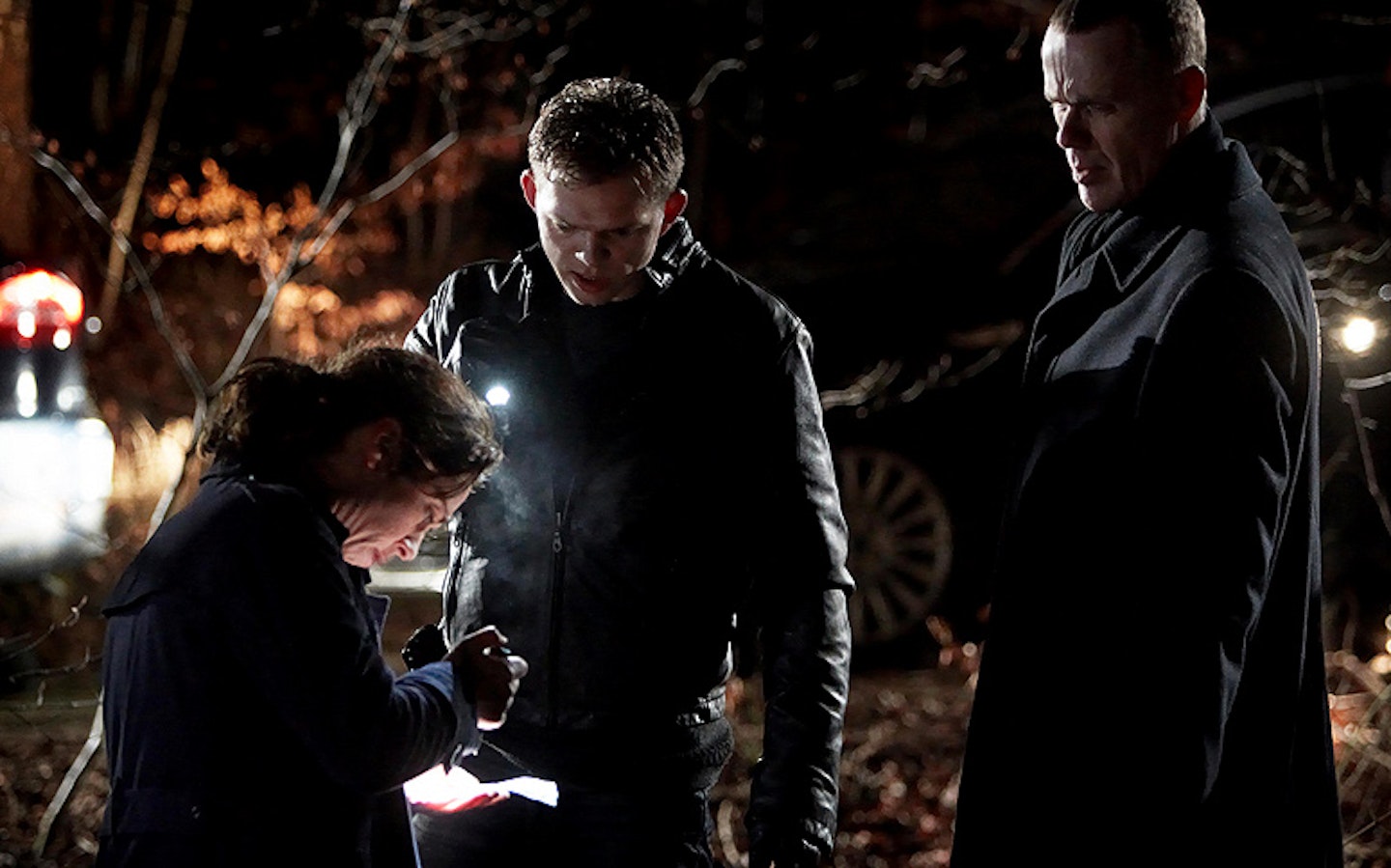
“I felt a bit bored with the usual shows. Many of them were shows depicting a detective who had 45 minutes to solve a murder mystery and there was a serial killer and the next episode was exactly the same. At the same time, the heroine had her private life. She was dating the forensic guy. I just felt disillusioned. I felt it was unrealistic and I felt it was a recipe actually. So I wanted to do something more epic, something more novel-like. I didn’t want it to be just a police HQ story. I wanted it to be one killing uniting some characters living in a city. Everything was built up around the image of domino pieces falling: when one piece falls, everybody falls. I had this thought we could maybe tell a more realistic story about a murder than we had seen before. But the banal thing is that I just like thrillers. I like the whole idea of sending Sofie Gråbøl into dark basements.”
Sveistrup first worked with Sofie Gråbøl on comedy-drama Nikolaj And Julie (“It was quite good,” he says. “It was a bit like Cold Feet.”) and wanted the actress to play Sarah Lund, crime investigator extraordinaire, from the get-go. Known at that time for her comedy roles, Gråbøl was a tough sell to the broadcaster. “She had never done anything like this before”, says Sveistrup, “but because she’s such a good actress, I didn’t see any problem with it. “ It’s probably fair to say Lund is 50 per cent Sveistrup, 50 per cent Gråbøl.
“I like the genre and I lean very strongly toward the silent types. There were US shows where the heroine was talking about her private life, her kids and her family. I always got a little bit bored there. Sofie had the same issues and then we went, ‘Okay, let’s do a silent type, let’s do an awkward type.’ That suited me fine, as I didn’t have to focus on her private life. I can put pressure on her by other characters talking about her private life. The main role was that she was unable to talk about herself, her feelings and she avoided any kind of personal bond in her work. When you watch a movie with Clint Eastwood, he is usually very, very silent. He keeps to his thing. Normally he is only good at one thing like Sarah Lund is. Then other people are talking about him as a dinosaur. That seemed fun, to do that with a woman instead. That was a hybrid of Sofie’s thoughts and my thoughts.”
Sveistrup thinks of Lund “more as an alien who has to deal with these humans”. “These humans” include her police chief Lennart Brix (Morten Suurballe) — “He tries to protect her but his own ambitions don’t always match with Lund’s abilities” — and in season one, her partner Jan Meyer (Søren Malling) who slowly earns her respect and pierces her armour — until he is heart-wrenchingly killed in episode 18.
“The whole idea of the first season was to take things and persons from Lund. The plot line was to ruin her life. I think I wanted to experiment with the Sarah Lund character that lost a lot of things like the biblical story of Job. I wanted to see if she lost her son, her relationship and her partner would she still feel the need, the urge to solve the crime? When she did that, that proved her character, her destiny.
“Soren Malling, who plays Jan Meyer, knew from the beginning that he was going to die. He didn’t like that very much. We had a meeting around episode 15 with him and Sofie. And I said, “Okay Soren, we have to talk about something different today because now is the time — in a few episodes you will die.” It was a shock for him because he had actually forgotten about it. He thought I had changed my mind. It was very essential for Lund’s story and nothing can compete with that.
“Soren and the guy who plays the killer in the first season Nicolaj Kopernikus and the guy who plays the killer in season two Mikael Birkkjær, they have formed a club called 'The Dead Ones', the ones that got knocked off. Whenever I meet them, they tease me about that.”
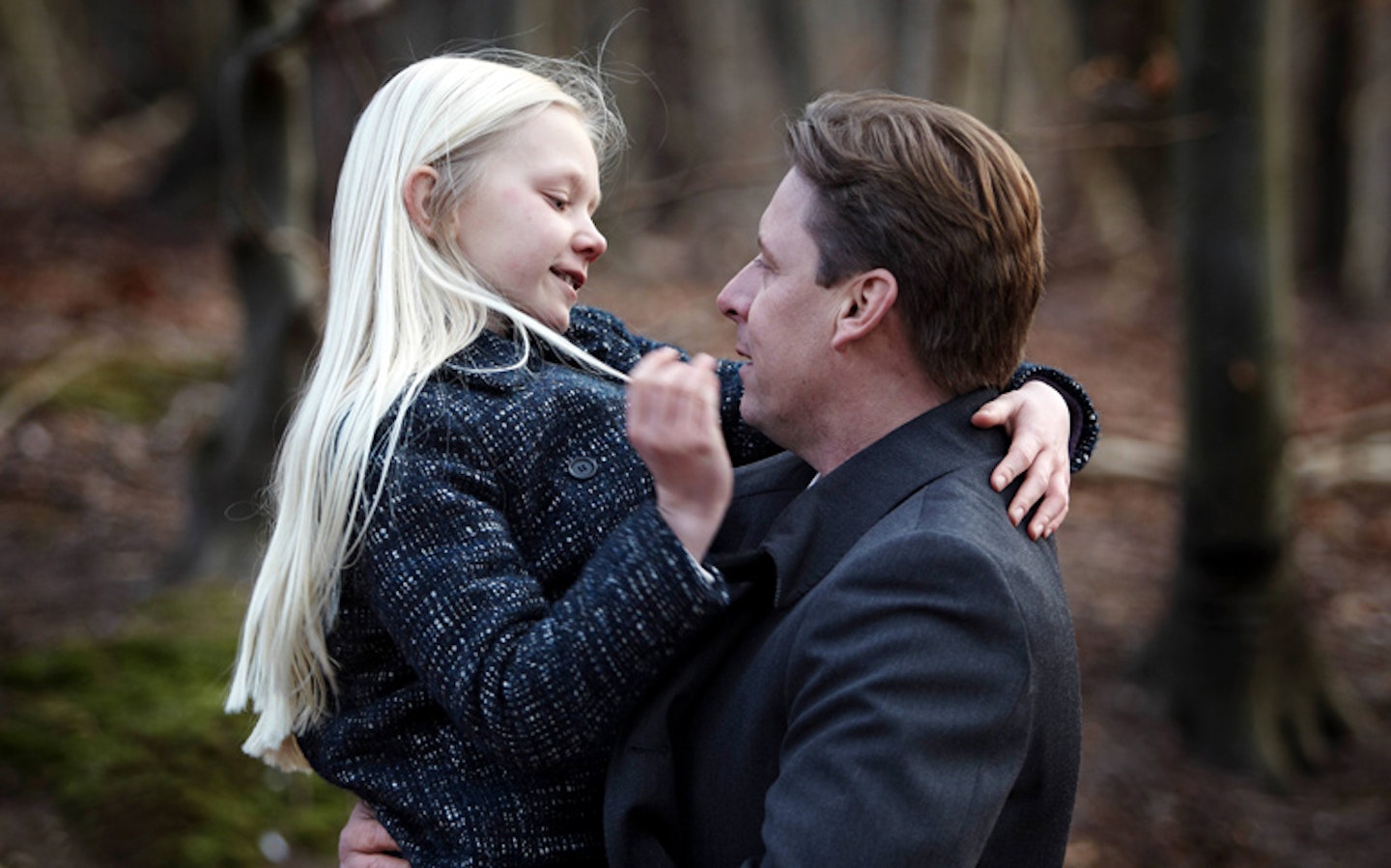
Key to the success of the show is its focus on more than just the procedural aspect of murder investigations. The three seasons have touchingly evoked the ramifications of crime across a broad strata of society from normal working class parents (season 1), military wives (season 2), and the leaders of big business (season 3).
“It was just a new way of looking at it: instead of just having the parents being questioned by the police one time, have them as main characters. That was actually because I did some research and I got very disillusioned because I experienced that many parents had to live through a tragedy like that. They go nuts, they lose themselves, they lose each other, their family gets destroyed and eventually perhaps the father takes his own life. I thought, ‘Okay, let me try to invent the best parents in the world and let’s see if they can make it, see if they can get over the revenge thought and move on in spite on this tragedy.’ You could say it was a human experiment for all the characters.”
The third thread in The Killing’s knitwear pattern is its desire to locate personal crimes within a broader political context. Each series has raised the stakes on the party political subterfuge, starting with city hall, expanding to the justice department before going all the way to the prime minister by season three. “That’s why it’s a trilogy,” says Sveistrup. “It couldn’t move on. You would have to go to the Prime Minister of England or the President of the United States. It is a completely natural stopping point, I think.
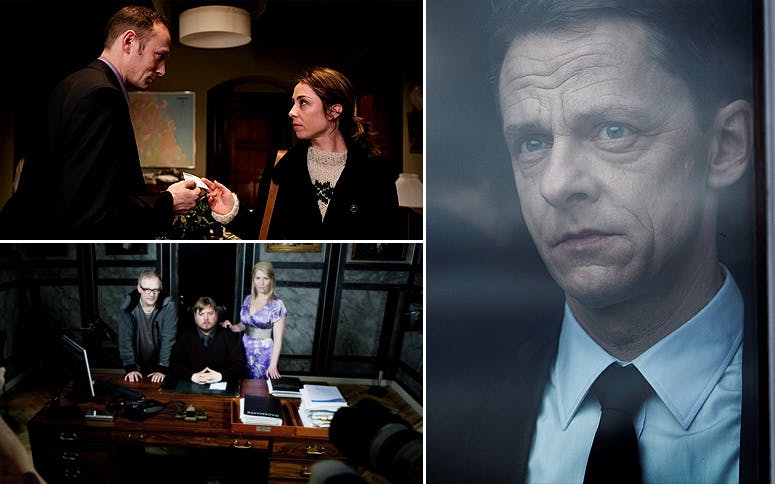%20*Clockwise%20from%20top.%20Season%201's%20mayoral%20candidate%20Troels%20Hartmann%20gets%20to%20know%20Sarah%20Lund.%20Season%203's%20embattled%20Prime%20Minister%20Kristian%20Kamper.%20Justice%20Minister%20Thomas%20Buch%20(centre?auto=format&w=1440&q=80)
“The politics is exciting, especially in a genre like the thriller. There are a lot of hidden agendas so it comes natural to use politics. In politics, you also have a lot of idealism and the dangers of corruption. If I look at the three seasons, they are all about the same thing: the danger of you losing yourself, being compromised, trying to take the short cut — if you are a politician, if you are a detective, if you are a dad, you can lose yourself. You get very close to the abyss so take care you are not falling into the abyss.”
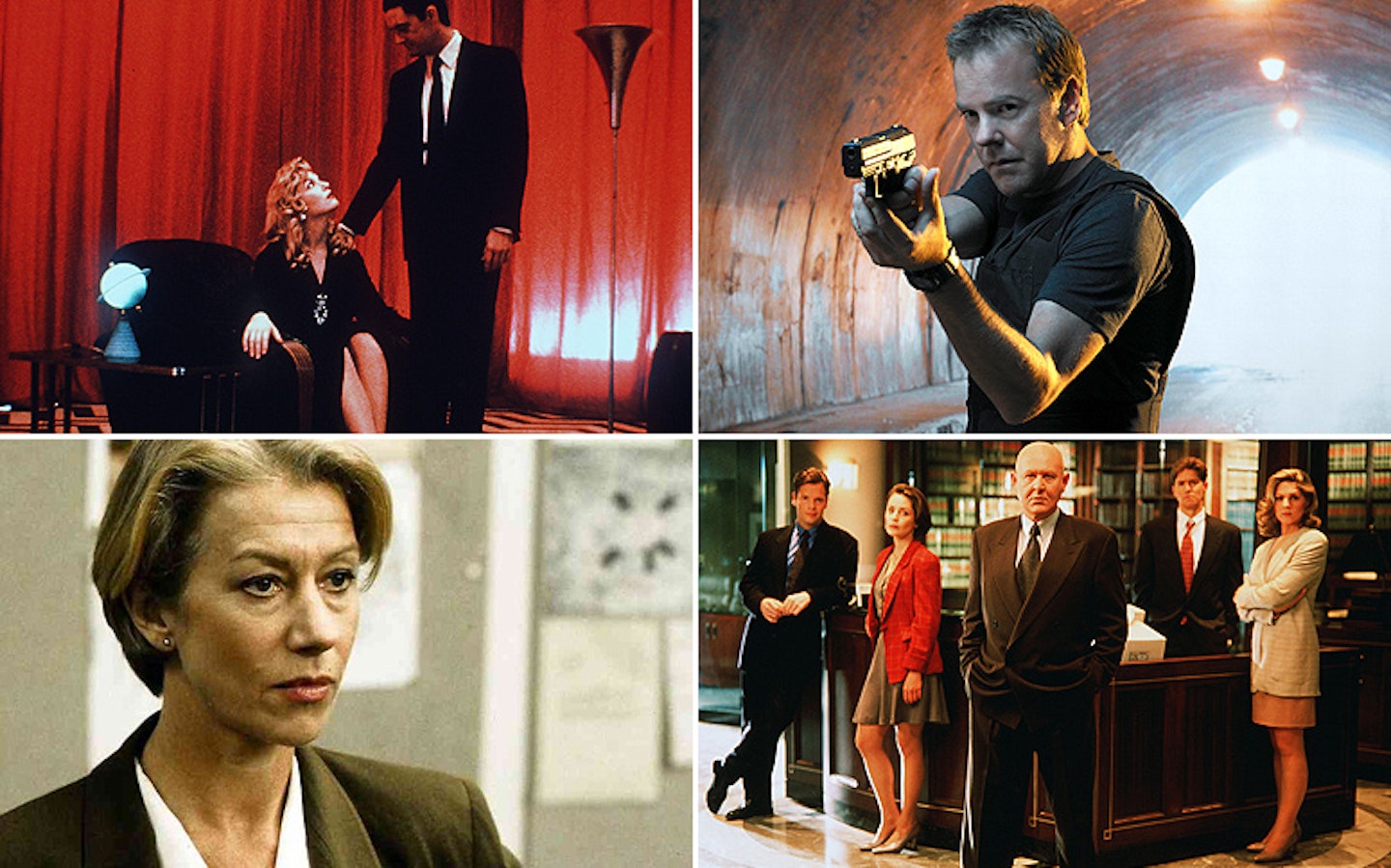
As a TV show there is much that is distinctly Scandinavian about The Killing; its depiction of politics, its sense of melancholy, its cultural customs (check out the wedding in season 2). But it is also a show born out of a love and respect for quality US and UK police drama.
“I saw Twin Peaks, I saw 24, I saw Murder One, I saw Prime Suspect. I saw what I could find that had some quality about it. And then I saw there was room for me because they focused on other stuff than I would. It was a kind of melting pot I was cooking. You watch these big shows and you think, “Wow, they did good,” but then you miss something. For example, I think Twin Peaks was fantastic and it was deconstructing the crime genre but basically it was a comedy. I’m old school in that way and I felt a little bit cheated when Spirit Bob just moved around in Twin Peaks town. I wanted to see if you can really do a crime story set over 20 days in 20 episodes and not just to laugh about it but to take the investigation seriously.”
*Identifying the killer in each season of The Killing has become a huge guessing game, especially in Denmark. “Everybody has a lot of theories,” says Sveistrup, “much better and more fantastic than mine.” As such the plots use a lot of sleight of hand distractions to keep Lund (and the audience) off the scent. *
“The red herrings, even though they didn’t give us the actual killer, had to reveal something else; a hidden agenda or a hidden thing in a person’s life. You have to give the audience a secret so that Sarah Lund didn’t get the whole secret, just a little piece of the puzzle. It proves that the whole whodunnit engine of a story is incredibly strong. It’s an excuse for telling other stories, of course. If you find a body in the first two pages, the audience is always looking for the killer. It’s natural. We are looking for the conclusion. The audience are the real detectives.”
Much of the power of the show comes from its look. While it employs the torch-lit dank cellars and empty corridors you’d find in any Silent Witness episode, it is the wide shots of the seamier side of Copenhagen — eons away from the Hans Christian Andersen tourist-y view of the city — that lodge in the memory, expertly evoking the loneliness and dread you’d find in the dark corners of any capital.
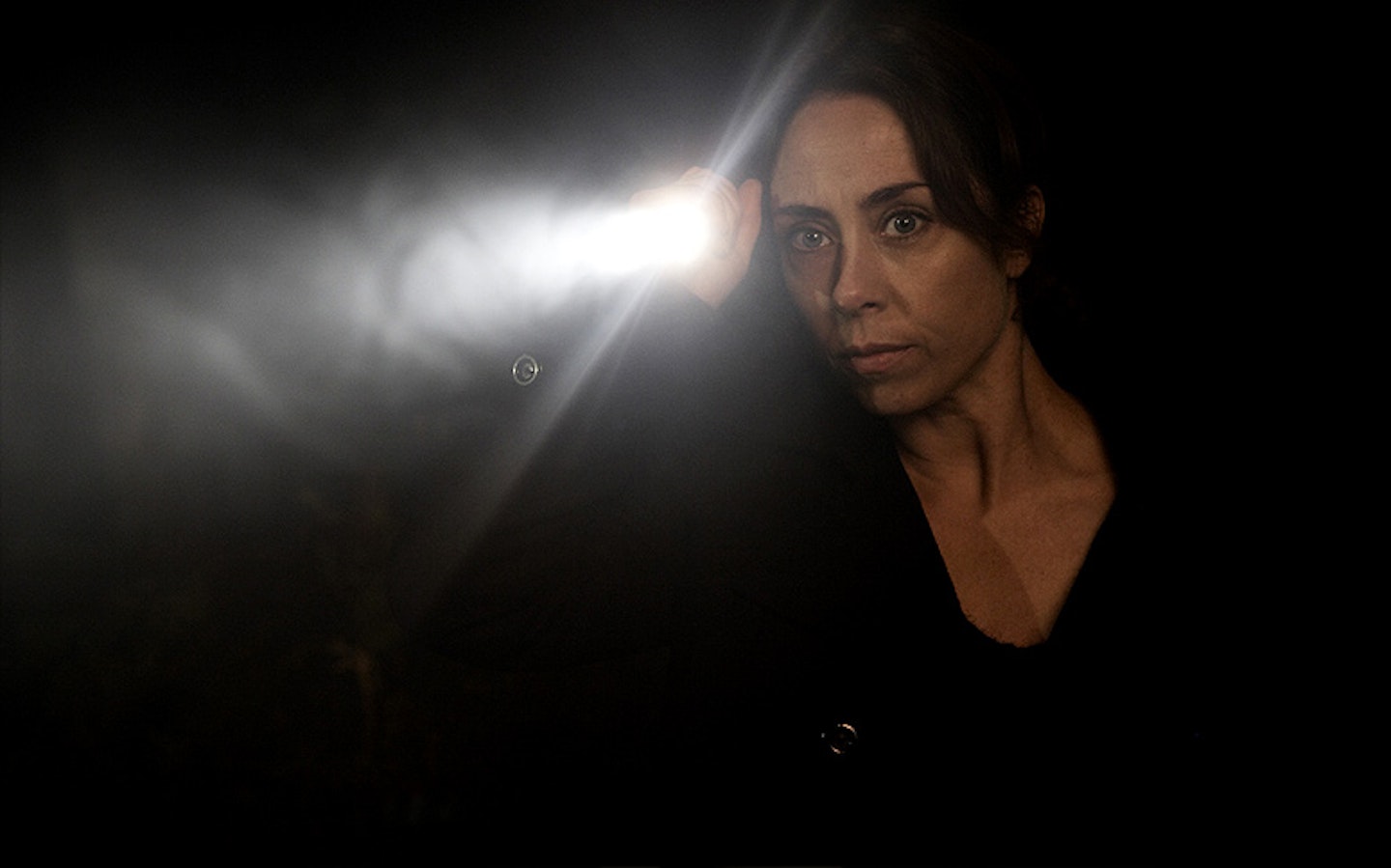
“Television is a great window to the world. Sometimes there’s a lot of standard stuff you do, a lot of clichés you do. I just thought, ‘Why can’t we do cinematic stuff? Why does television have to be close ups?’ That was one of the main issues when we talked about the visual side. I wanted to have the big pictures. We are so to speak looking down at the ants in the city and we, as the audience, we can see stuff the characters can’t see. The characters are trapped in this city during the whole show. The visual side is extremely important. It was never meant to be social realism. It was meant to be a myth, to be more Old Testament-like. It sounds strange but that’s why we talked a lot about spaghetti Westerns. I watched a lot of spaghetti Westerns not at the cinema but on television. As a writer or director, you shouldn’t make any distinction when doing television or movies. Why be less ambitious on television?”
Debatably the most kick-ass theme tune on TV{
“We wanted it to be something that was repeating itself, not having any song in it. Sometimes you can create relief in the audience by playing a beautiful song and ending it all with a small smile. As I said before, the characters are trapped and I wanted it to be cynical. Of course, it should be a moody tune but it should be repeating itself so they couldn’t get out of the box so to speak. The audience should have that feeling too. The composer Frans Bak also had a lot of songs that we could have used but it didn’t seem the right thing to do with the genre. We don’t have any lyrics. The music should just be used to enhance the feeling of being in this bubble which you can’t get out of only when the resolution is there after 20 episodes.”
Even if you’ve never seen an episode of The Killing, you’ll know about Sarah Lund’s jumper. This is not Danish fashion; instead it is Faroese (i.e. from The Faroe Islands, the country that always loses 8-0 in Euro qualifiers) and is made from undyed organic wool from indigenous sheep. It has also spawned its own website — www.sarahlundsweater.com.
“It’s a mystery to me why people go on about it. I guess it is the same as Sherlock Holmes’ pipe. It’s strange but it is definitely an icon for the show. It was Sofie’s choice. Sofie said, “This is not a character who wants to show her sexuality. Can I hide my sexuality?” I thought it was a very good idea because she is Sofie Gråbøl, she has a special glow around her. You can dress her down so dramatically and she still shines through. We wanted it not to play on her sexuality and in a strange kind of way it made her more sexy.”
The Killing Series III is released on DVD on Dec 17th, The Killing Trilogy (feat series 1-3) is released on both Blu-ray & DVD on the same day.